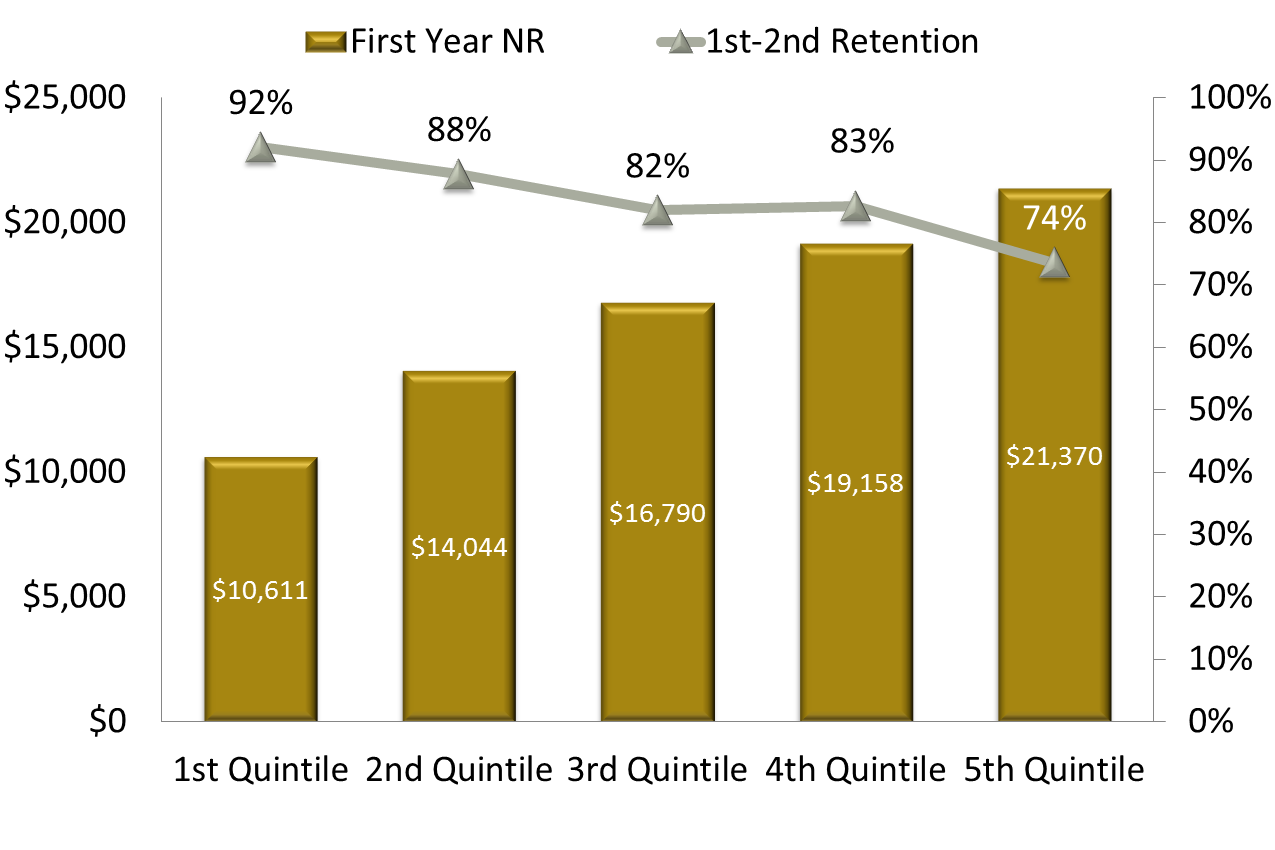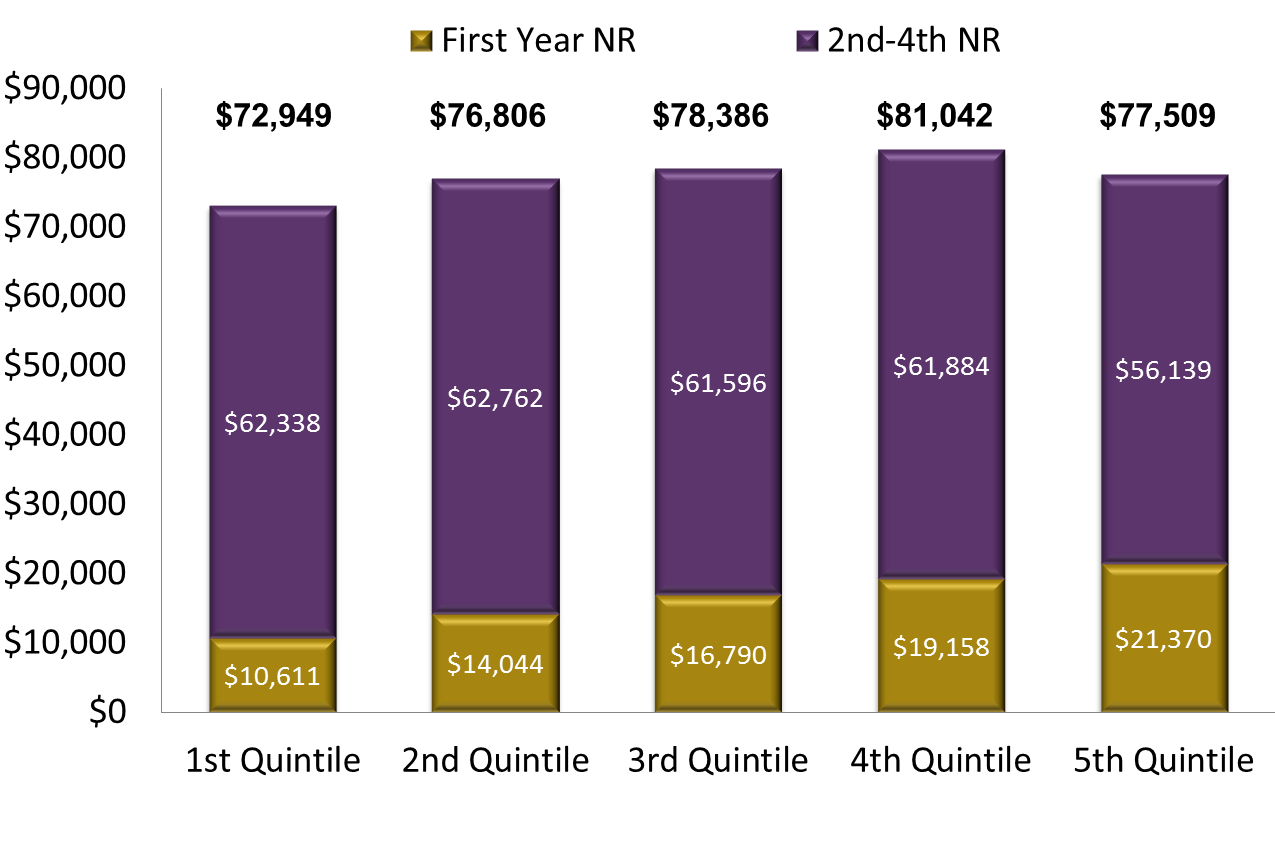enrollment
The merit of offering merit scholarships (from a net revenue perspective)
You probably know that your top merit scholarship recipients are more likely to generate less net revenue than your non-scholarship recipients (at least during their first year). You also probably know that your top scholarship recipients are more likely to retain at a higher rate than your non-scholarship recipients. Do you ever therefore wonder if, because of good retention and other factors, your top scholarship recipients might generate more revenue than your non-scholarship recipients over the course of their entire career at your college/university?
Perhaps the purpose of your merit scholarship program is more focused on improving the academic profile of your school. Or maybe it’s to help you enroll students who might not otherwise be willing or able to attend your institution.
No matter what the primary purpose of your merit scholarship program, you would benefit from calculating how much net revenue each of your merit scholarship levels generates on average over the multiple years that a student enrolls. This data can provide insight into how you might modify your whole scholarship program (meaning all institutional aid) in order to meet your institutional goals more effectively.
To illustrate how this works, let’s look at how one of our clients divided the entering 2008-09 first-year cohort into academic quintiles based on students’ academic achievement in high school (test scores, GPA, class rank). Quintiles were used because they provided a simpler framework in this instance. However, if you wish to duplicate this exercise, I recommend using your actual scholarship levels. Here is how net revenue generation looked for this institution’s first year:

Or

Net revenue is defined as “tuition plus fees minus any institutional gift aid” (including funded endowed aid, and need-based unfunded aid).
Indirectly, retention determines how many successive years this revenue is generated, but with several caveats:
- Adverse selection comes into play. Students with better financial aid packages retain at slightly higher rates, so the average net revenue generated for each group may be lower than what was generated in the first year.
- How you package aid for your continuing students might also impact how much net revenue is generated in each year. You might hold your financial aid flat, allowing you to generate more net revenue in each succeeding year because of tuition increases.
- Aid savings may also be offset by departmental scholarships, which are offered only to upper-class students, or by aid which you grant on appeal.
- Revenue may increase when students lose their academic scholarships because they don’t meet the renewal criteria, but remain enrolled and pay the difference.
- Revenue will also be affected by how many and which student populations take five years to graduate instead of four.
The total revenue generated looks as follows:

Or

The next question is whether having the higher academic criteria of a first quintile student over the second quintile student was worth an additional $3,857? You may also ask if the fifth quintile students were really worth the revenue they generated given the extra costs to the institution in support services. Some CFOs might even say that you really need to subtract the net tuition revenue of the fifth quintile from your institution’s accounts receivables because some of this revenue is never collected.
The example above is from a selective institution with name recognition, but the results below from a more traditional school look very similar. Both of these institutions have been using our Enrollment and Revenue Management System (ERMS) for more than 10 years.

The most surprising thing for me about this data is how each quintile generates such a similar amount of revenue. Perhaps in a perfect world, the mark of an ideal scholarship program would be whether or not it generates the same amount of net revenue in each category.
These examples illustrate that merit aid awards have a revenue impact that goes far beyond the initial expenditure of aid. Student retention and academic profile can have direct impacts on your aid, and even factors such as the quality of alumni and career outcomes—which can affect both recruitment and retention—can play a role.
The point is that systematically measuring the impact of your merit aid on recruitment, retention, profile, and other key factors is crucial if you want to fully understand how merit award affects your enrollment and net revenue. How to do that goes beyond the scope of this post, but send me an e-mail and I will gladly offer suggestions or answer any questions you have.